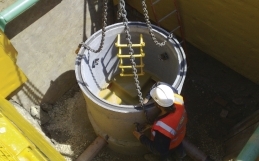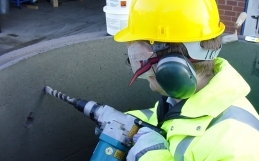Under domestic law (the Health and Safety at Work etc Act 1974) employers are responsible for ensuring the safety of their employees and others. This responsibility is reinforced by regulations.
The Confined Spaces Regulations 1997
Apply where the assessment identifies risks of serious injury from work in confined spaces.
- These regulations contain the following key duties:
avoid entry to confined spaces, e.g. by doing the work from the outside; - if entry to a confined space is unavoidable, follow a safe system of work; and
- put in place adequate emergency arrangements before the work start
The Management of Health and Safety at Work Regulations 1999
Require employers and self-employed people to carry out a suitable and sufficient assessment of the risks for all work activities for the purpose of deciding what measures are necessary for safety. For work in confined spaces this means identifying the hazards present, assessing the risks and determining what precautions to take.
A confined space is a place which is substantially enclosed (though not always entirely) and which also has a reasonably foreseeable risk to workers of serious injury from hazardous substances or conditions within the space or nearby such as fire, explosion, loss of consciousness, asphyxiation or drowning. A confined space has limited or restricted means for entry or exit and is not designed for continuous occupancy. Confined spaces may include, but are not limited to, tanks, vessels, silos, storage bins, hoppers, vaults, pits, manholes, tunnels, access shafts, boilers, pump stations, digesters, water supply towers, equipment housings, ductwork, sewers, pipelines.
In general, a confined space is made up of 3 main parts:
1) being large enough for an employee to enter and perform work
2) has limited or restricted means for entry or exit
3) is not designed for continuous occupancy
Useful information:
Confined Spaces: A brief Guide to Working Safely
Guidance on permit-to-work systems: A guide for the petroleum, chemical and allied industries
Developers have a duty to appoint a principal designer in accordance with the Construction (Design and Management) Regulations 2015. The designer is responsible for all the duties described in the Regulations.
The Regulations require the principal designer to take into account (in addition to construction risks) the health and safety aspects over the whole life of the development.
The developer must include a management and maintenance plan (in addition to the health and safety file) to demonstrate that the designer has taken the health and safety considerations of future maintenance into account in preparing the design.

